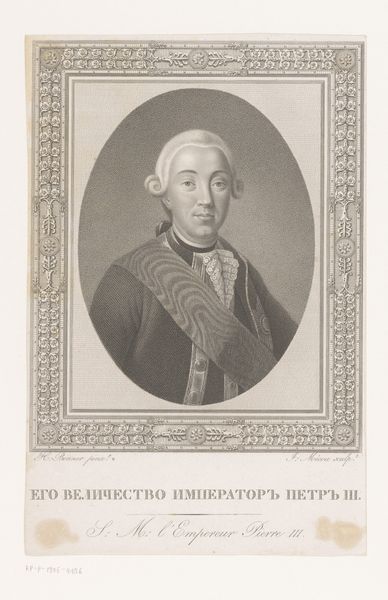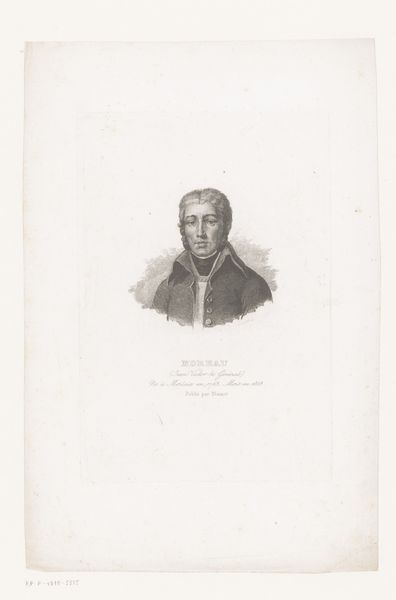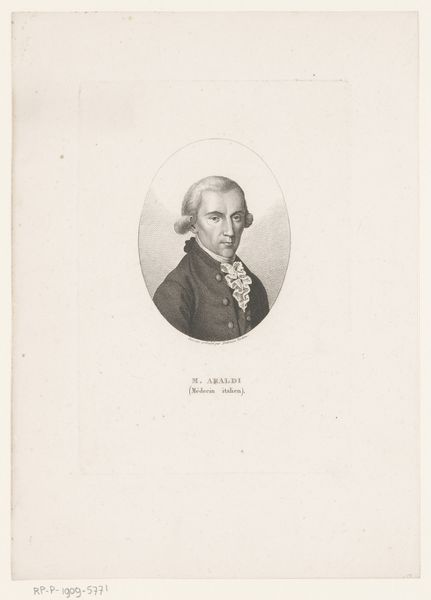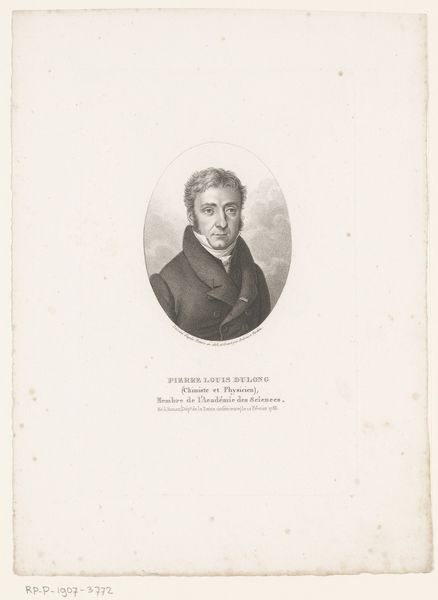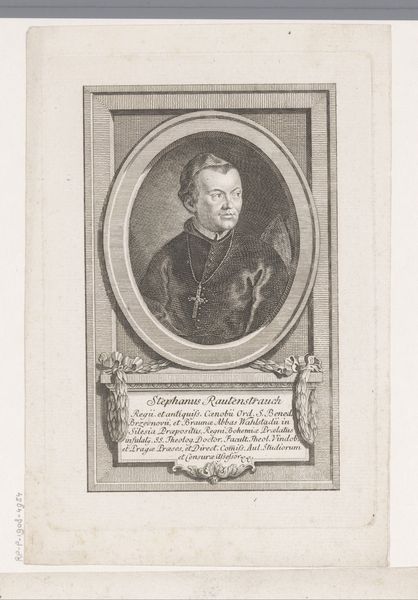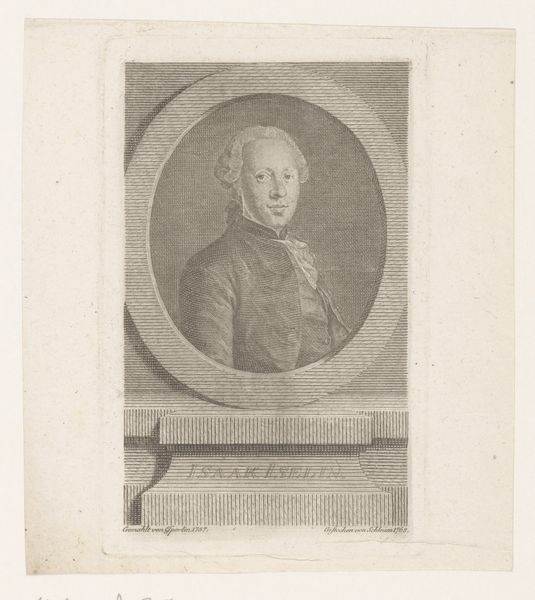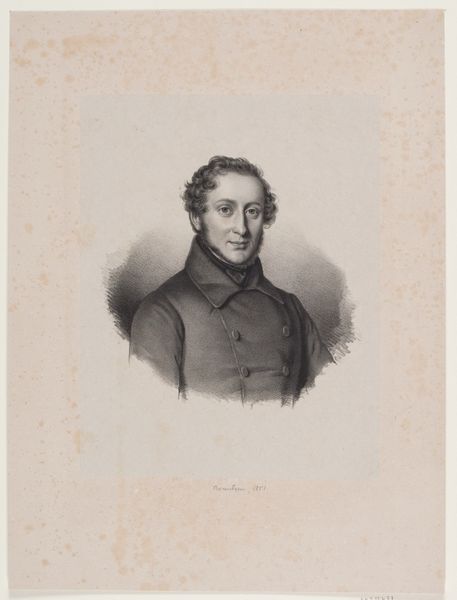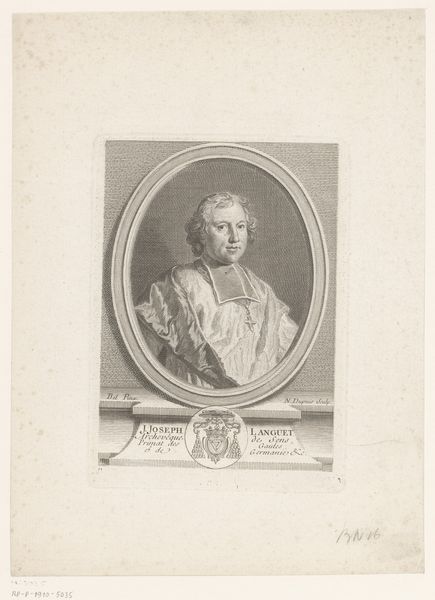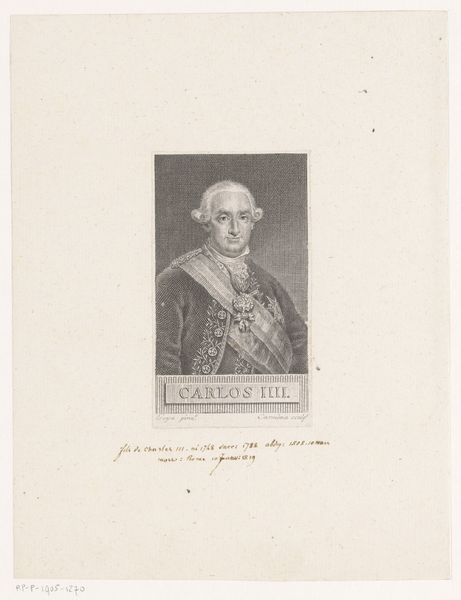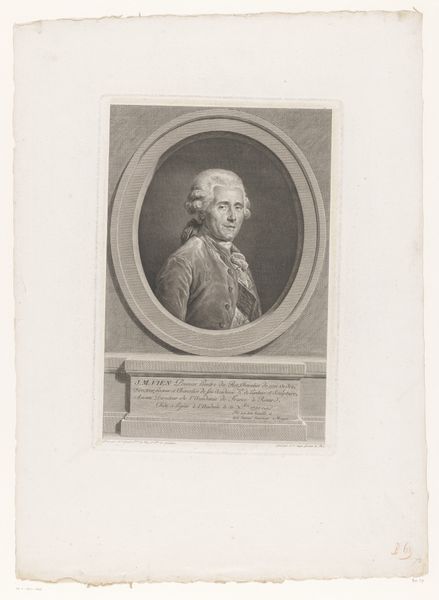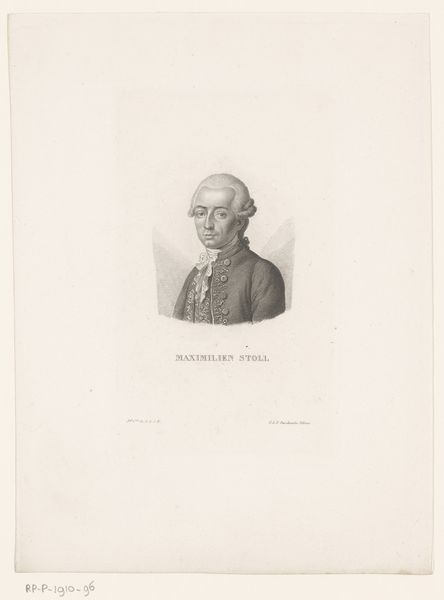
print, engraving
#
portrait
#
neoclacissism
# print
#
history-painting
#
engraving
Dimensions: height 354 mm, width 253 mm
Copyright: Rijks Museum: Open Domain
Curator: This is a print dating back to 1801, "Portrait of General Jean-Victor Moreau" by Pierre Audouin, residing here at the Rijksmuseum. It's an engraving that embodies the Neoclassical style, quite typical for depictions of figures during this period. Editor: Immediately, I notice the severe, almost stoic expression of the general. It evokes a sense of duty, but also perhaps hints at the pressures and expectations placed on military leaders. There’s this formality to it, and that’s highlighted with the vignette depicting battle below. Curator: Exactly. The inclusion of that battle scene grounds Moreau not just as a portrait, but also as a figure inextricably linked to the historical events he participated in. We have to remember the context: This image was created during a period of great political and military upheaval in Europe, when revolutionary zeal met the pragmatism of empire building. It served as both propaganda and memory making, showing both a personal representation and larger battle that impacted culture and identity. Editor: It’s interesting how these images often served to consolidate power and portray a very specific, curated image of those in charge. You know, the strategic placement of elements, even the artistic choices related to neoclassicism become rhetorical tools used to convince and legitimize leadership in a very particular way. I notice, that his coat, despite being ornate, has this dark quality of being the same tone and shade as the battle vignette below—making him seem just a product of warfare. Curator: That's a fascinating take. And you're right to bring attention to the details of the uniform, with the focus and high contrasts being dedicated to the lapel details of leaf-like designs—an appeal to an ordered image in an un-ordered era. However, one has to recognize these engravings as often products of workshops under the influence and instruction of those whom are wealthy and seeking to advance within culture. Editor: It makes you think about how even portraits we consider historical records aren't necessarily straightforward representations of an individual. They're actively constructed narratives shaped by artistic convention, and even by the socio-political needs of the moment. Thanks for guiding us through this interesting piece! Curator: The pleasure was mine. Examining the layers of history imbedded in images is really to appreciate art.
Comments
No comments
Be the first to comment and join the conversation on the ultimate creative platform.
